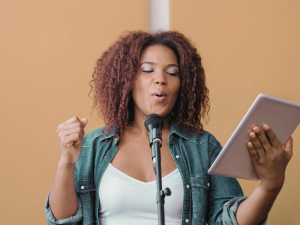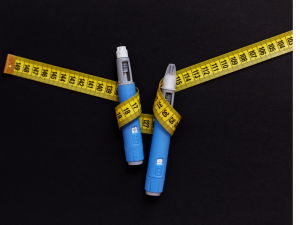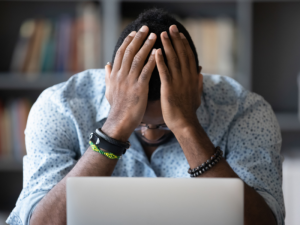Most of us don’t pay much attention to our voice until something goes wrong. Your voice is more than just sound; it is a vital part of your identity and how you connect with others. Whether you are a professional speaker, teacher, or performer, or just gen pop being able to express yourself clearly is essential.
Voice issues are not limited to professionals. Losing your voice to a cold or struggling to raise it when needed are everyday experiences. when tension builds in the muscles that support your voice, it can lead to frustration, limit your ability, and even threaten your career. I remember my early days as a secondary school teacher, trying to project my voice to manage a noisy classroom. Like many new teachers, I was completely hoarse by the end of the first half term.
It is normal to experience vocal strain occasionally, such as after cheering at a game, singing at a party, or recovering from illness. However, if symptoms such as fatigue, hoarseness, discomfort, or loss of vocal range persist for more than a few weeks, it may be time to seek support. This is where osteopathic laryngeal manual therapy can make a difference.
What is Osteopathic Laryngeal Manual Therapy (LMT)?
Osteopathic laryngeal manual therapy is a gentle, hands-on treatment that addresses the underlying causes of vocal strain. Rather than focusing only on symptoms, it helps the body return to better balance and function. Like other osteopathic approaches, it looks beyond just the voice box.
The therapy targets the muscles surrounding the larynx, as well as related areas such as the neck, jaw, tongue, diaphragm, ribs, and spine. These structures function together, and tension in one can affect the whole system.
After a detailed assessment and case history, precise manual techniques are used to release tightness and restore better coordination. This allows your vocal cords to move more freely and with less effort. It’s a focused therapy that supports lasting vocal health.
Who Can Benefit?
- Osteopathic LMT may be helpful for:
- Speakers, teachers, performers, and anyone who uses their voice regularly
- People experiencing vocal fatigue, hoarseness, breathlessness, or discomfort
- Those recovering from surgery or managing conditions like Muscle Tension Dysphonia, TMJD, or silent reflux
- Individuals with a history of neck or head trauma
- People affected by stress, anxiety, or neurological conditions that impact voice
- Anyone noticing vocal strain, reduced power, or a change in vocal range
How It Works
Your voice depends on a coordinated network of muscles and structures. The vocal folds are housed in the thyroid cartilage, which is supported by muscles that attach to the hyoid bone, a small floating bone in the throat. If these muscles become tight or imbalanced, your voice can be affected in much the same way a strained muscle limits movement in sports.
Each session begins with a conversation about your voice concerns, followed by a gentle assessment of your neck, jaw, and diaphragm. With your consent, I may use intraoral techniques to reach deeper muscles involved in voice production. Your comfort and safety are always the priority.
The aim is to restore ease, strength, and freedom to your voice.
Benefits for Speakers and Singers
- Speakers: Greater clarity, reduced fatigue, and more vocal stamina
- Singers: Better breath control, less strain, and improved tone quality
Take the First Step
If your voice feels tired, strained, or different from how it used to be, osteopathic laryngeal therapy may help. Get in touch to book a session and start your journey toward a more distinct, more confident voice.









